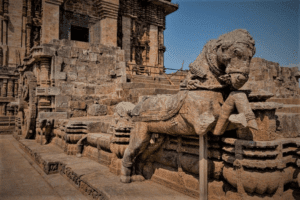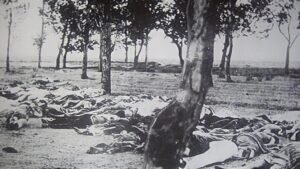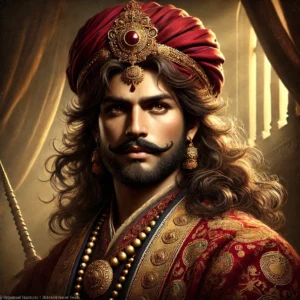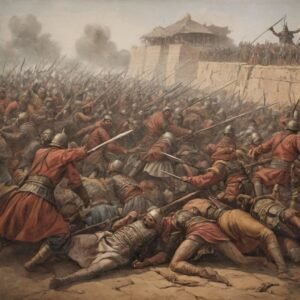Rana Sanga: Rajput Warrior Who Defied Empires (1482–1528)
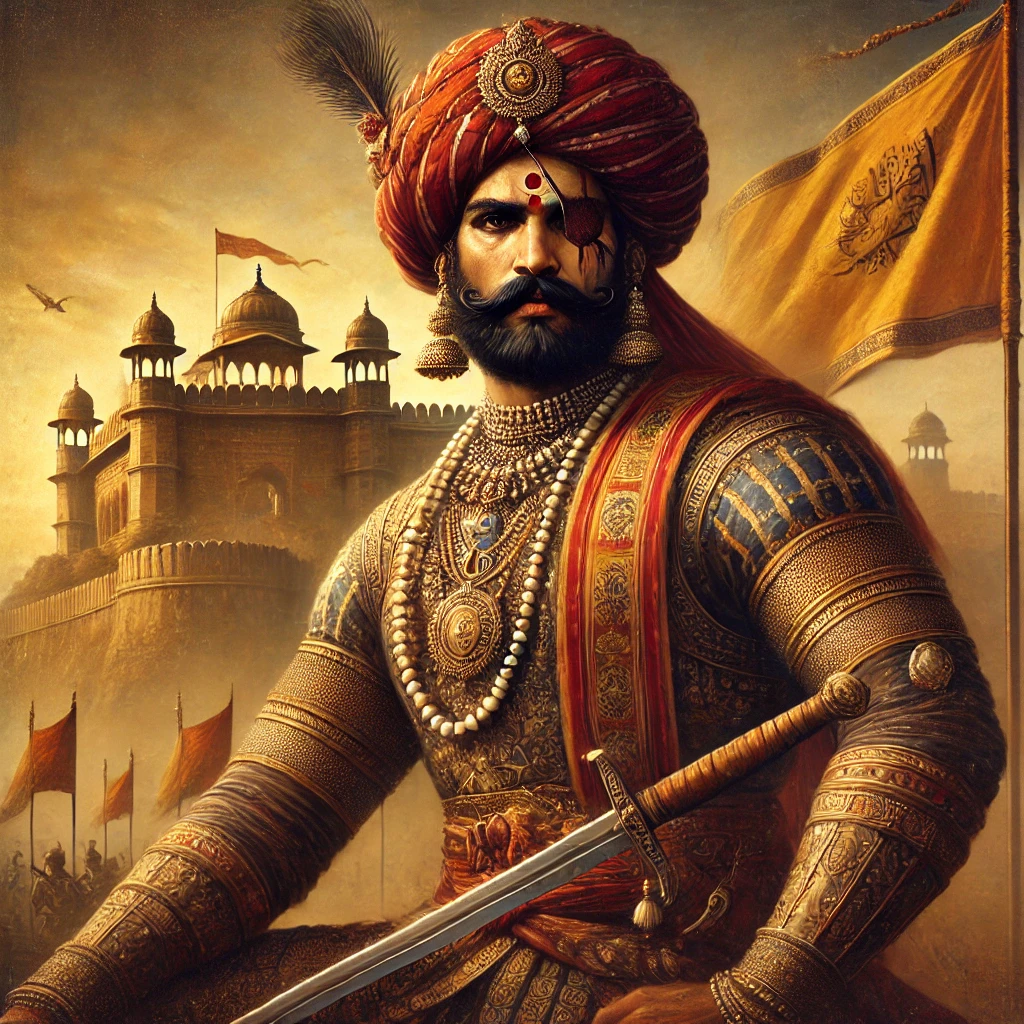
Maharana Sangram Singh, better known as Rana Sanga (1482–1528), was one of the most formidable Rajput rulers of Mewar. He is remembered for his military brilliance, resistance against foreign invaders, and efforts to unite the fragmented Rajput clans. His reign was marked by intense warfare against the Delhi Sultanate, Gujarat, Malwa, and later, the Mughals. Despite his valiant efforts, his defeat at the hands of Babur in the Battle of Khanwa (1527) marked a significant shift in Indian history, paving the way for Mughal rule. However, one controversial and often debated claim is whether Rana Sanga himself invited Babur to India, inadvertently aiding the establishment of Mughal dominance.
Early Life and Ascension
Rana Sanga was born into the Sisodia dynasty of Mewar, a lineage known for its fierce independence and warrior ethos. He was the grandson of the legendary Maharana Kumbha, known for fortifying Mewar and promoting art and architecture. His father, Rana Raimal, ensured his sons received rigorous military training. However, Rana Sanga’s path to the throne was not easy. He faced a brutal succession battle against his brothers and emerged victorious, ascending the throne in 1509.
Under his leadership, Mewar reached its military zenith, challenging the might of Ibrahim Lodi of Delhi, Muzaffar Shah II of Gujarat, Mahmud Khilji II of Malwa, and later, Babur. His kingdom extended beyond Rajasthan into Madhya Pradesh and Uttar Pradesh. Chittorgarh, the capital, flourished as a center of Rajput power and culture, known for its imposing forts, temples, and artistic grandeur.
Military Campaigns and Conflicts
Rana Sanga engaged in some of the most significant battles of his time, defeating powerful adversaries and expanding Mewar’s influence.
Wars Against the Delhi Sultanate
- Battle of Khatoli (1518): Faced Ibrahim Lodi, the last ruler of the Lodi dynasty. Despite being outnumbered, Sanga decisively defeated Lodi’s forces, capturing key territories in eastern Rajasthan and parts of Madhya Pradesh.
- Battle of Dholpur (1519): Lodi attempted to reclaim lost lands, but Sanga crushed his forces again, weakening Delhi’s control over northern India.
Wars Against Malwa and Gujarat
- Campaign Against Malwa (1519–1521): Rana Sanga defeated Mahmud Khilji II, securing Chanderi as a Rajput stronghold.
- Campaign Against Gujarat (1521): Challenged Sultan Muzaffar Shah II, extending Mewar’s influence into western India.

Unification of Rajputs and Alliances
Unlike many earlier Rajput rulers who fought among themselves, Rana Sanga focused on unity. He forged alliances with:
- Medini Rai of Chanderi, a powerful Rajput ruler
- Rao Ganga of Marwar, ensuring Marwar’s support
- Hasan Khan Mewati, an Afghan noble who opposed the Mughals
These alliances helped consolidate Rajput strength against external threats.
The Alleged Invitation to Babur
A widely debated claim is that Rana Sanga invited Babur to invade India to weaken the Lodis. This theory stems from Babur’s own memoirs, the Baburnama, where he states that some Indian nobles, including Daulat Khan Lodi and Rana Sanga, sought his help against Ibrahim Lodi.
Analyzing the Claim:
- Babur’s Account: Babur mentions that Indian factions sought his aid, but his primary goal was to conquer India, not just assist allies.
- Political Strategy: If Sanga did engage with Babur, it was likely a tactical move to weaken the Lodis, rather than an open invitation for conquest.
- Contradictory Actions: If Sanga had willingly allied with Babur, why would he later oppose him so fiercely at Khanwa?
Battle of Khanwa (1527) and Aftermath
The Battle of Khanwa was a defining moment in Indian history. Rana Sanga led a powerful coalition of Rajputs and Afghan chiefs against Babur. However, Babur’s superior artillery and military strategies, such as Tulughma (flanking tactics) and field fortifications, led to a decisive Mughal victory.
Despite his defeat, Sanga refused to submit. He planned to regroup and launch another war but was allegedly poisoned by his own nobles, who feared continued warfare would destroy Mewar.
Architectural and Cultural Contributions
While Rana Sanga is best known as a warrior, he also contributed significantly to Mewar’s cultural and architectural heritage.
- Chittorgarh Fort: Strengthened and expanded under his reign.
- Temples and Stepwells: Patronized the construction of Hindu temples and step-wells, preserving Rajput cultural identity.
- Rajput Art and Traditions: Encouraged Rajput artists and warriors to flourish, making Mewar a center of Rajput heritage.
Contemporaries and Relationships
Rana Sanga’s era saw the rise of several significant rulers:
- Babur (Mughal Emperor): His greatest rival at Khanwa.
- Ibrahim Lodi (Delhi Sultan): Defeated by Rana Sanga before his final loss at Panipat (1526).
- Mahmud Khilji II (Malwa Sultan): An adversary in Sanga’s expansionist campaigns.
- Muzaffar Shah II (Gujarat Sultan): Opposed Rajput influence in Gujarat.
- Medini Rai (Ruler of Chanderi): A trusted Rajput ally.
- Daulat Khan Lodi (Governor of Punjab): Allegedly involved in inviting Babur.
Legacy and Impact on Indian History
Rana Sanga remains a symbol of Rajput valor, unity, and resistance. His leadership inspired later warriors like Maharana Pratap, who continued the struggle against Mughal dominance. Even in defeat, his resistance shaped Rajput identity and preserved their warrior spirit.
Key Aspects of His Legacy:
- Rajput Unity: Strengthened Rajput alliances against external threats.
- Defiance Against Mughals: His resistance influenced later Rajput rulers.
- Cultural Contributions: Helped preserve Rajput art and heritage.
His legacy is defined by his courage, military prowess, and commitment to defending Mewar. His reign established Mewar as a dominant power, and his resistance against foreign rule continues to inspire generations of Indians.
Rana Sanga was not just a warrior; he was a visionary leader who fought to preserve Rajput honor and independence, making him one of India’s greatest historical figures.



